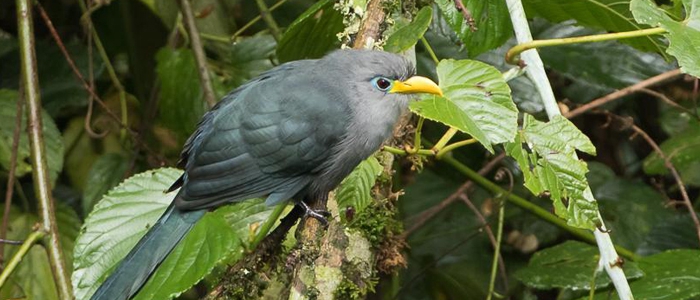

What to Know About the Striated Heron in Uganda?
The Striated Heron in Uganda is one of the African birds of Uganda seen during Uganda birding tours.
Also called the mangrove heron, this small, mostly non-migratory heron belongs to the family Ardeidae, order Pelecaniformes, genus Butorides, and species striatus.
Birdwatchers on Africa birding safaris and Uganda birdwatching tours often enjoy spotting this secretive bird. Such moments enrich birding in Uganda and birdwatching tours in Africa.
It’s a small bird with a length of 48cm, wingspan is between 52-60cm, and weighs between 200-250g.
Their breeding habitat is small wetlands in the Old-World tropics. In Uganda, they can be seen during the boat launch on the shores of River Nile in Murchison falls national park.
How Does the Striated Heron in Uganda Look Like?
The Striated Heron is a small, stocky dark backed heron with a thick neck, dark bill, short legs, and grey neck.
The adult striated heron has a silky greenish-black crown with a short-erected crest. The irises are orange-yellow.
Lores are dull and yellow-green above and black on the lower portion. The beak is dark, the upper is brown black and the lower is dusky green, lighter at the base.
The dark stripe spreads from the beak to beneath the eye. The sides of the head, neck, and breast are light grey to buff.
Their back is dark grey with a green cast, with lengthened feathers towards the tail. Upper wings are grey black with buff edges to downs. Wings are black, with edges buff colored.
The chin and the throat are white. The throat and the midpoint of the upper breast are dotted steeply in a rufous, chestnut band marked with white and framed in grey.
Its underparts range from brown grey to grey. The legs are olive grey at front and yellowish- green overdue.
During breeding, breeding, its head, crest and back turn glossy blue-black, while irises change to deep orange in courtship.
The beak turns out to be glossy black especially in male. lores turn blue-black or navy-blue. The legs turn glossy-orange. The females are slightly smaller.
How Does a Striated Heron in Uganda Sing and Make Calls?
A striated heron is a relatively silent bird and has less vocal. The main vocalization is the “Keeuuk” call, used during alarming, flight and advertising call.
It is also heard as “k-yek,” “baaek,” “tyong,” “tyah,’ ‘kyah,” “skuk,” or “tchack.” Skow calls given by displaying males.
A sneezing “Tech-aah” call and a “Hoo” calls are heard when they are in courtship. the female answers to the male’s stretch display with a soft Coo call. “Tchee-unk” upon arrival at the nest.
Where Does the Striated Heron of Uganda Inhabit?
The striated heron prefers forested water shores. They live in marshes, swamps, mangrove-lined shores and estuaries.
They are seen on the banks of rivers, streams, ponds, lakes with thick marginal foliage. In Uganda, they inhabit the banks of river Nile in Murchison falls national park.
What Does the Striated Heron in Uganda Feed On?
The striated heron feeds on insects, crustaceans, frogs, tadpoles, molluscs, fish, lizards, small birds, rodents and plant stuff.
How Does the Striated Heron in Uganda Breed?
The Striated heron builds a weak nest using branches hidden in trees and bushes. Exact breeding season is not observed. The nest the female may lay three to five eggs. Both the parents take turns to feed the hatchlings.
More posts for you

Over 50 excellent reviews on Safaribookings.
 >
> 




